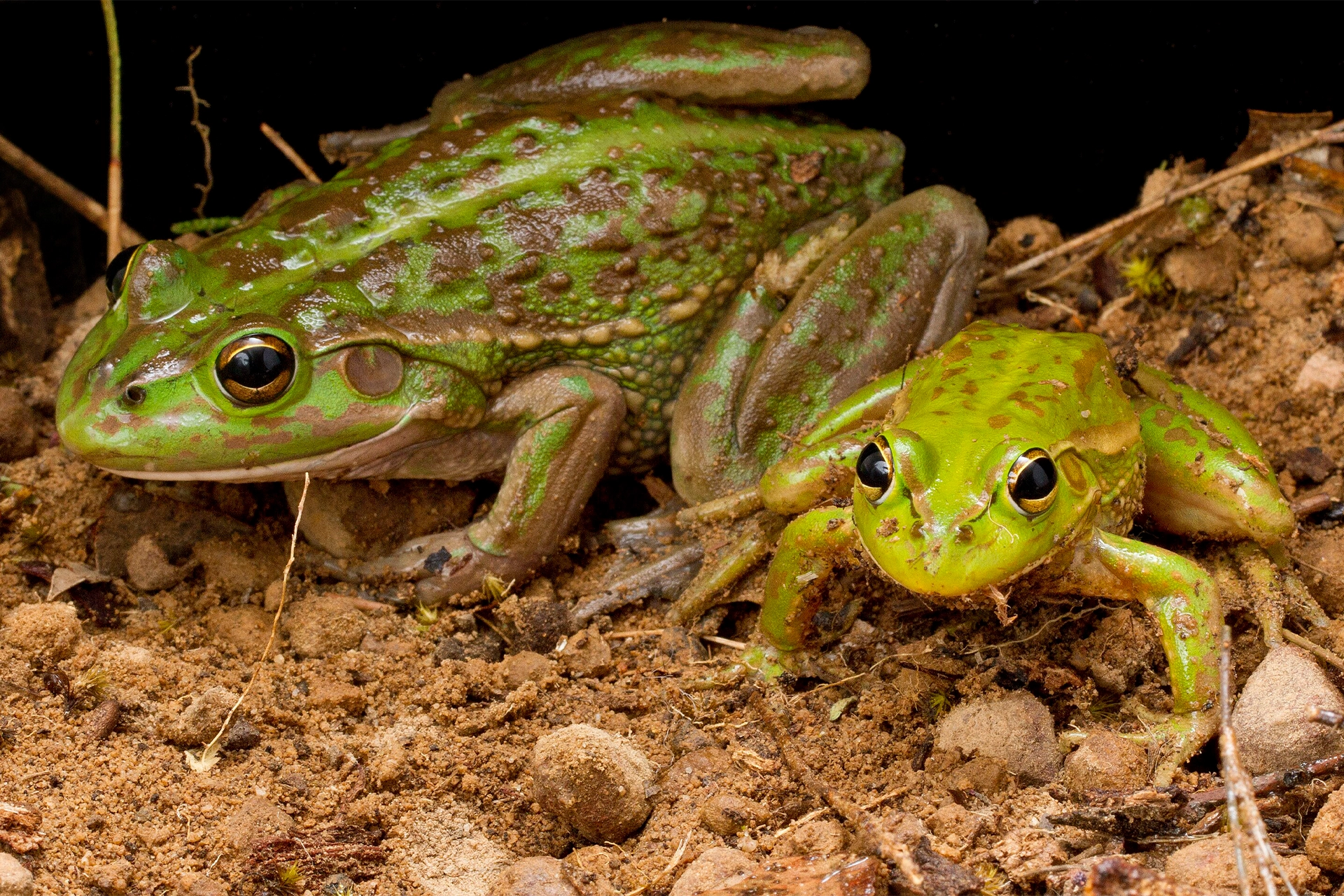
Environment
Hope for endangered frogs

Frogs are a vital but endangered part of Australia’s ecosystems. You can help protect them in your neighbourhood
Published 1 October 2024
Amphibians have been on Earth for more than 400 million years.
As the first land-based vertebrates, they evolved from fish during the Devonian period.
Frogs are one of three orders of living amphibians, and the only one that is native to Australia.
Victoria is home to 38 of Australia’s 254 frog species.
They form an important part of many ecological communities and are found in a wide variety of wetlands, from alpine bogs to farm dams, urban streams and desert pools.
Across all their life stages (eggs, tadpoles, juveniles and adults), frogs are prey for other animals, but they’re also important predators in both freshwater and terrestrial habitats.
Species with a free-swimming tadpole stage are also an important conduit for the movement of energy and nutrients between freshwater and the land.
Male frogs use their call to attract females for mating, and to establish their calling territory when rival males are present. Each species has a distinct call – this ensures that female frogs choose a mate from their own species.
Different species call at different times, and we’re now coming up to one of the busiest calling periods of the year – frog Spring.
According to the International Union for the Conservation of Nature, 40 per cent of the world’s frog species are currently at risk of extinction, with the status of another 10 per cent insufficiently understood to make a sound judgment (these are known as data-deficient species).
Key threats to frogs include habitat loss and fragmentation resulting from agriculture and urban development; barriers to movement across the landscape (making it difficult for frogs to move between breeding sites); the fungal disease chytridiomycosis (chytrid for short); exposure to chemical pollution; noise pollution (from traffic and aircraft) which makes it hard for female frogs to hear calling males; and introduced predators.
1 / 4
This October, you can help frogs by taking part in a new citizen-science project, Frog Month Victoria.
Simply record the sounds of calling frogs at your local wetland, pond, stream or farm dam using Melbourne Water’s Frog Census App, then upload your recording.
Melbourne Water’s team of expert ecologists will listen to the recordings and identify which species of frogs are calling. And even if no frogs are calling, this is valuable information too.
You can also take and share photos of frogs and their habitats.

Environment
Hope for endangered frogs
The data collected through this question-driven project will help Catchment Management Authorities, scientists and community groups across the state understand which frogs are located where, and how we can best conserve them.
We’d love to receive your recordings of any and all frogs calling around Victoria over the next month.
However, we’re featuring two species in particular: the threatened growling grass frog (Litoria raniformis) and the introduced eastern dwarf sedge frog (Litoria fallax).
The growling grass frog is also known as the southern bell frog or warty swamp frog (really).
As its name suggests, this species has a wonderful growly call.
Previously common across Victoria, it has suffered significant population declines since the 1970s. The main causes are habitat loss and fragmentation, urban development, disease and introduced predators like the mosquitofish (Gambusia spp.) that prey on eggs and tadpoles.
We’re keen to find out where this species is still holding on around Victoria.

Sciences & Technology
You might find a rare species in your backyard
Although the growling grass frog is listed as ‘vulnerable’ under Australia’s Environment Protection and Biodiversity Conservation Act and Victoria’s Flora and Fauna Guarantee Act, Melbourne's ongoing expansion means the wetlands that are home to this species are still facing destruction.
Many of these wetlands provide high-quality, fish-free breeding habitat.
While there are plans to partially compensate for this loss by creating new wetlands along rivers and streams (known as ‘riparian zones’), we'll still see a net reduction in suitable breeding habitat available for this – and many other – frog species across the city.
The eastern dwarf sedge frog (sometimes known as the banana-box frog) is common in Queensland and New South Wales, and has hitched a ride to Victoria in boxes of produce like bananas.
We know that these frogs have established populations around Melbourne and in north-east Victoria near Yackandandah.
During Frog Month Victoria, we’d love to find out about any other populations of this species around the state.
As well as helping us find some of these species, there are other things you can do in your local area to help frog populations. Small actions by many people can have a big impact.
Limit the use of pesticides and herbicides in your garden or on your rural property
Pick up after your dog, so droppings don’t wash into nearby creeks and wetlands
Slow down when driving after dark, especially on rainy nights – frogs may be crossing roads
Protect wetlands from trampling by livestock.
We need people like you to help conserve our local species of frogs, so please get out there with your phones and get uploading because frogs really are amazing.
You can take part in Frog Month Victoria each October by recording frog calls near you using Melbourne Water’s Frog Census App: